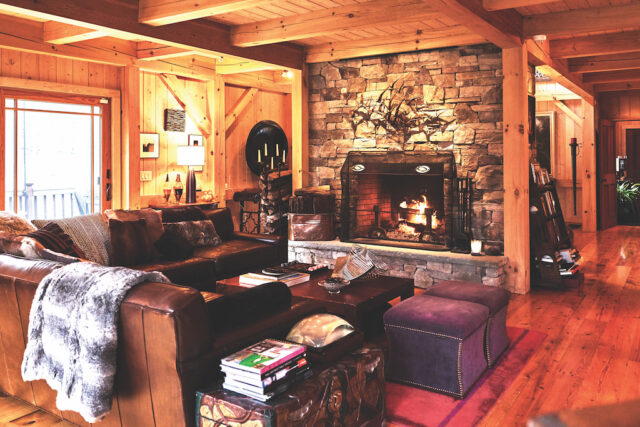
By Donna Bulseco
In the 21st century, television has managed to shake off its nicknames—boob tube, idiot box, the small screen—and continues to draw a brag-worthy swath of viewers to live broadcasts such as this year’s Super Bowl 58, which attracted 123.7 million viewers, according to Nielsen, second only in history to the 1969 moon landing. And despite our obsession with another small screen (our cellphones), research shows there are still some 125 million American TV households with at least one TV screen to watch at home, often in the bedroom.

“I can’t stand the idea of a television in your bedroom—it’s slothful,” says fashion and culture critic Hal Rubenstein, who viewed close to 700 hours of television at New York City’s The Paley Center for Media while researching his newest book, Dressing the Part: Television’s Most Stylish Shows, published by HarperCollins last year. “Beds are for sleeping and other stuff you don’t need a television for.” He and his husband, civil engineer and Compass real estate agent David Nickle, have five screens in their house in Columbia County, New York, but in less predictable spots—the gym, the laundry room, the kitchen, the den and the guest bedroom—where they allow an exception: Guests should feel welcome to do whatever they want.
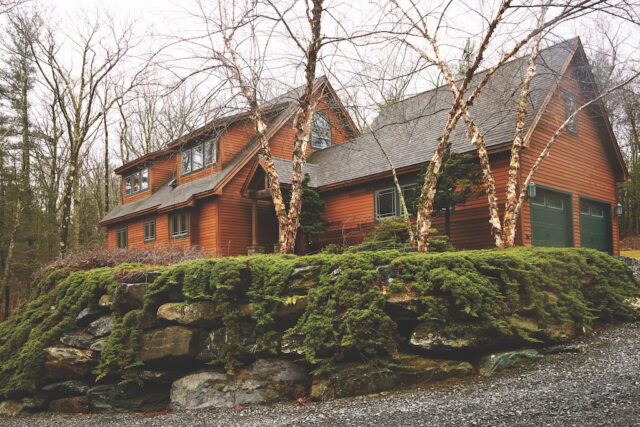
“Welcoming” is certainly a word that comes to mind when stepping into the couple’s handsome living space with its L-shaped sofa facing the brick fireplace, soaring ceilings, tall windows unfettered by curtains, and an open kitchen where Rubenstein works his culinary magic when entertaining. Each room holds many stories (as in tales, not levels)—and one could envision a miniseries about a couple building a 4,000-square-foot post-and-beam dream home in the middle of a forest like they did, happy ending included. In the same way you discover clues to a television character through the costumes he or she wears, you can tell a lot about people in the way they decorate their home, according to Rubenstein: “In the Scandal pilot, costume designer Lyn Paolo put lawyer Olivia Pope [Kerry Washington] in a smart Tory Burch white trench coat, and the instant you saw her you knew she was a take-no-prisoners kind of person.”
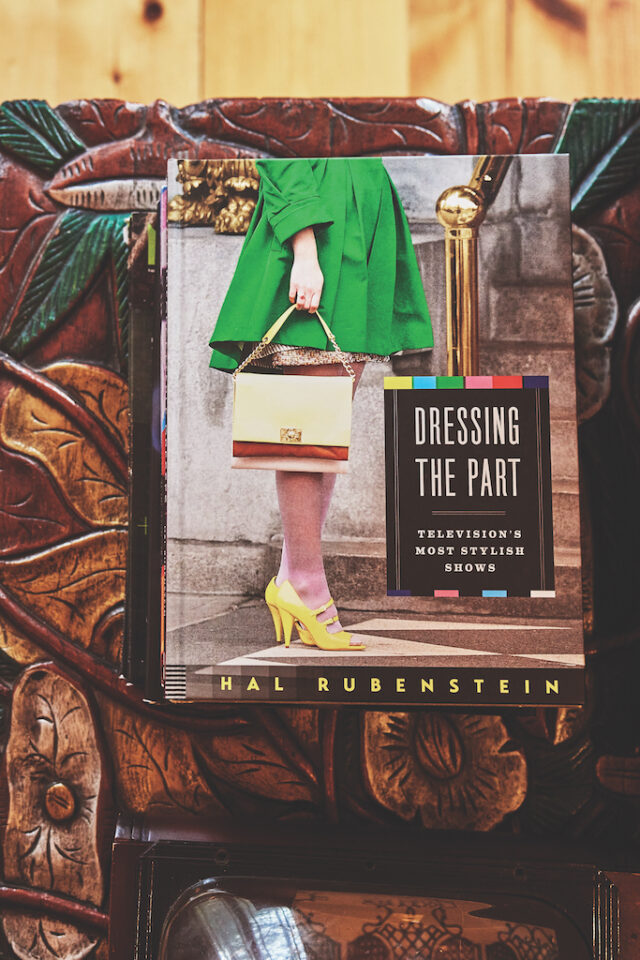
That same first impression extends to your home, says Rubenstein. “Everything you do that other people can see should be an extension of you and your personality and what attracts you,” he says. “When you walk in our house, you know who lives here—we are not minimalists. We bought everything piece by piece, and each thing in our house has a story.”
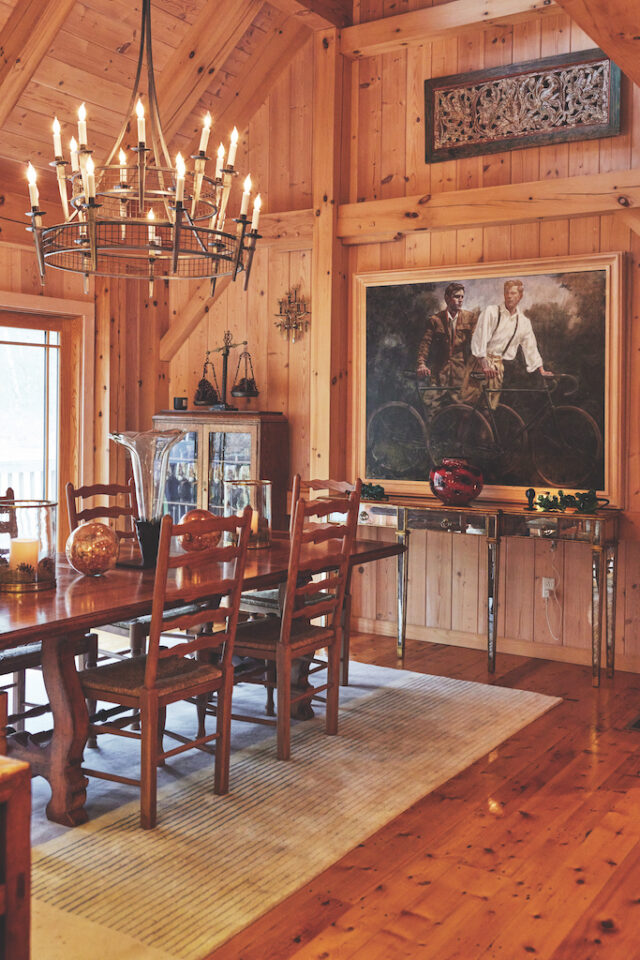
There is pottery and artifacts from trips to Peru, leftover raw glass from glass blowers, and a customized chandelier crafted by Joseph Stannard Design in Norfolk, Connecticut. A love of quality meant the couple were open to gracefully aged and repurposed materials: Their Timberpeg house was built out of reforested wood; floors are antique recycled spruce sourced by Tallon Lumber from barns up in Vermont; and when the couple decided to refinish the basement, they agreed to a new recycled denim insulation suggested by the contractor. “The effect is like you’ve put your denim jeans in a Vitamix blender,” Rubenstein explains.
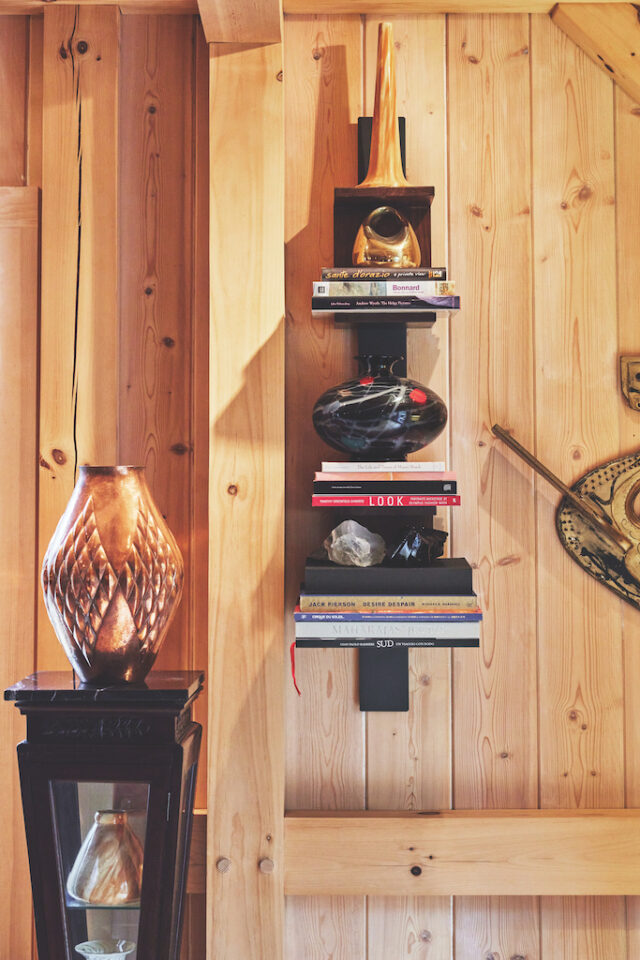
Many objects were bought at Worth Galleries in Miami, like the huge bell jars transformed into exterior lights. Inside, gorgeous green-glass lamps embellished with gold-painted leaves are placed on a 19th-century hickory wood credenza from China, while a silkscreen from artist Pat Steir faces off against a piece by Mark Beard, a figurative painter known for the murals he created for Abercrombie & Fitch, and whose work has been shown at the Carrie Haddad Gallery in Hudson, New York.
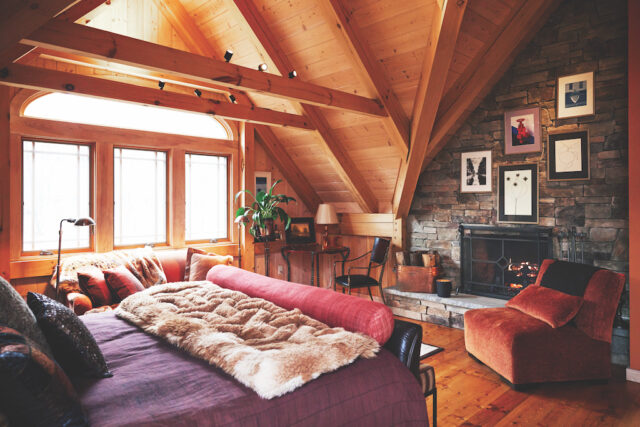
The couple built the house as a weekend place, but nowadays they find themselves lingering there at least half of the week. The light, the views, and the sense of peace and quiet they experience constitute a favorite form of entertainment. “The entire place feels like a retreat; there’s no traffic on the road we live on, and at night the stillness is incredible,” says Rubenstein. “There’s nothing to interrupt your thoughts.”



